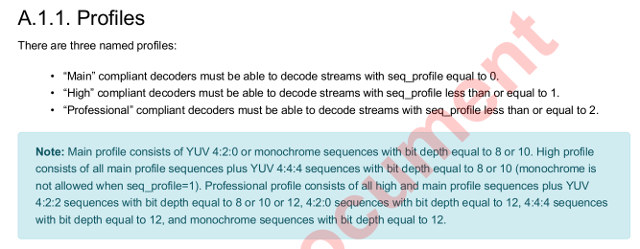AOMedia’s AV1 video codec is an open source, royalty-free video codec aiming to surpass H.265 capabilities, and considering the savings to be made, as no royalties need to be paid, and potentially lower bandwidth requirements, many companies are on board including Google, Arm, Facebook,. Amazon, Apple, Intel, Cisco, and many others.
Back in February we got an AV1 progress update at FOSDEM 2018, and the speaker explained there was still a few items to work out to finalize the specifications. This is now complete, as AOMedia (The Alliance for Open Media) has just released the (draft) specifications.

Beside the Bitstream specification, the AV1 release includes:
- Unoptimized, experimental software decoder and encoder to create and consume the bitstream
- Reference streams for product validation
- Binding specifications to allow content creation and streaming tools for user-generated and commercial video
AV1 has already been shown to outperform both H.265 and VP9 in tests using PSNR (Peak signal-to-noise ratio) as a metric.
Now there’s still a lot of work to before we end up with AV1 capable TV boxes or smartphone, SoC vendor will have to implement it into their chip, tape then out, and manufacturers will have to design products around them. Content provider will in turn release videos with AV1 codecs, so this may well take 2 or 3 years before AV1 becomes more common. We’ll probably see it first on PC, but the decoder (and encoder) still needs to be optimized.
You’ll find the specification and other resources on AOMedia website.
Thanks to QuackyQuacky1 for the tip

Jean-Luc started CNX Software in 2010 as a part-time endeavor, before quitting his job as a software engineering manager, and starting to write daily news, and reviews full time later in 2011.
Support CNX Software! Donate via cryptocurrencies, become a Patron on Patreon, or purchase goods on Amazon or Aliexpress





2-3 yearst until videos will start appearing using this format. 4-5 years until stable H/W decoders start appearing. When the HEVC ecosystem will be fully matured, so end users will not shift tp this new format.
Not true, they have already said that hardware decoders will be shipping within a year. The aom have been creating a free hardware decoder design during the creation of av1 so it is likely already designed. As for videos netflix said they expect for some ready within 6 months. There are 3rd party encoders already being shown at NAB on april 10th. There are so many companies involved that we will see adoption much faster.
Should the anime fansubbing comunity starting to use this, then it will do well.
I assume you’re using that as a proxy for the adult film industry. They’ve chosen the winners and loosers in the last few video formats. 🙂
To be clear the unoptimised encoder, does it produce an optimised output video? I don’t mind if the encoder takes a long time to run so long as I can run it now and get the full space savings over h264.
I tried a little over a year ago, and while I’m sure it’s faster now, a CIF video encoding was done at 0.5 fps in mid 2016. So unoptimized may mean really slow. It should be easy to test with a short video for a few seconds. I’The output would just follow the specs, and here “unoptimized” is likely just about performance.
can we use supercomputers for encoding? lol
“Optimization” for video compressors is an ongoing process. A good question to ask is “does the current compressor make better files than the competetitors?” If the answer is yes, then what does “optimized” mean? If you’re asking “will the compressor do a better job at compressing in the future?” then the answer is almost always ‘yes’. Is that a reason not to use the current version?
Follow the “tests using PSNR” link in the article.
Minor issue: compare av1 to H.265, not H.264.
YouTube has setup a playlist with some AV1 video for testing @ https://www.youtube.com/playlist?list=PLyqf6gJt7KuHBmeVzZteZUlNUQAVLwrZS
If you play those from a web browser you’ll need the following to get AV1 codec:
There’re some apparent motion-estimate errors in this one form the list: https://www.youtube.com/watch?v=oAbB4dQOz4I
Look at the foreground fern in the first shot.